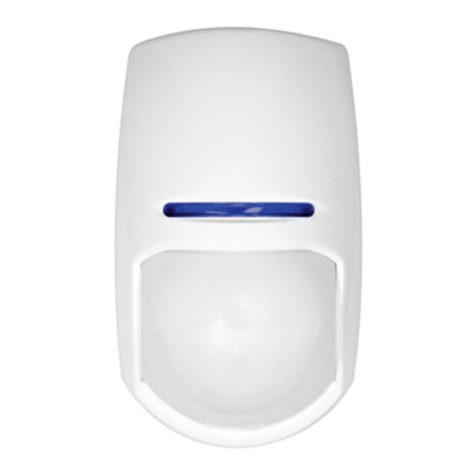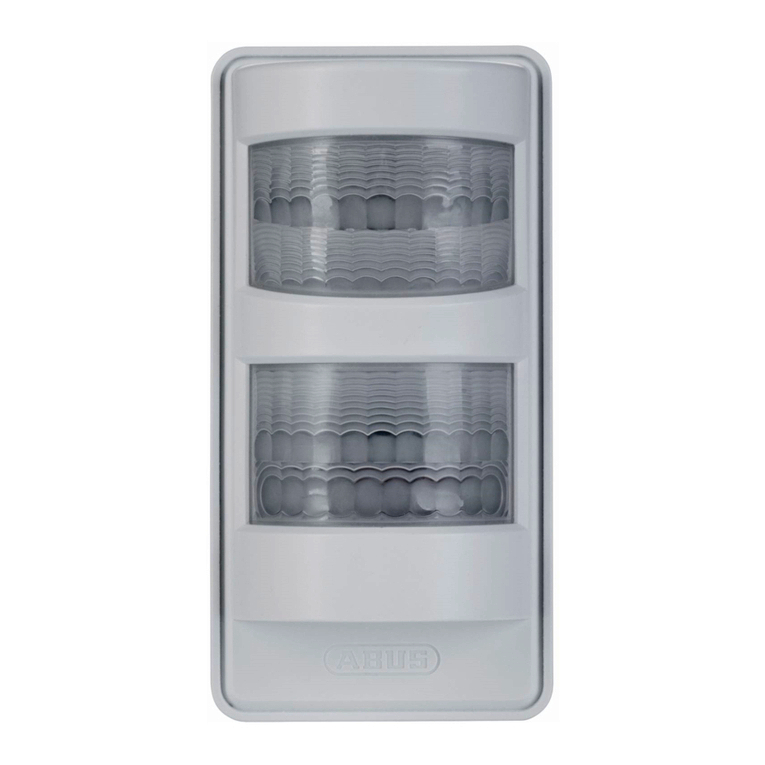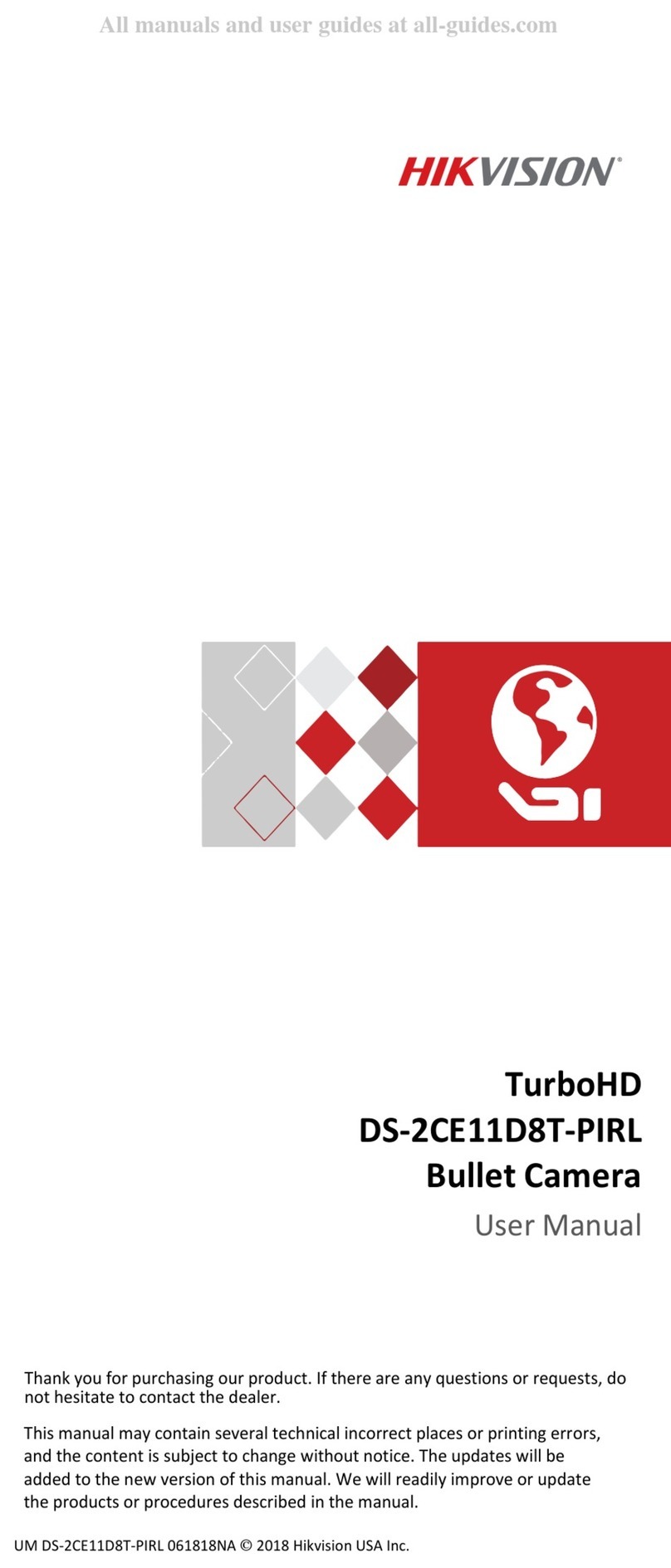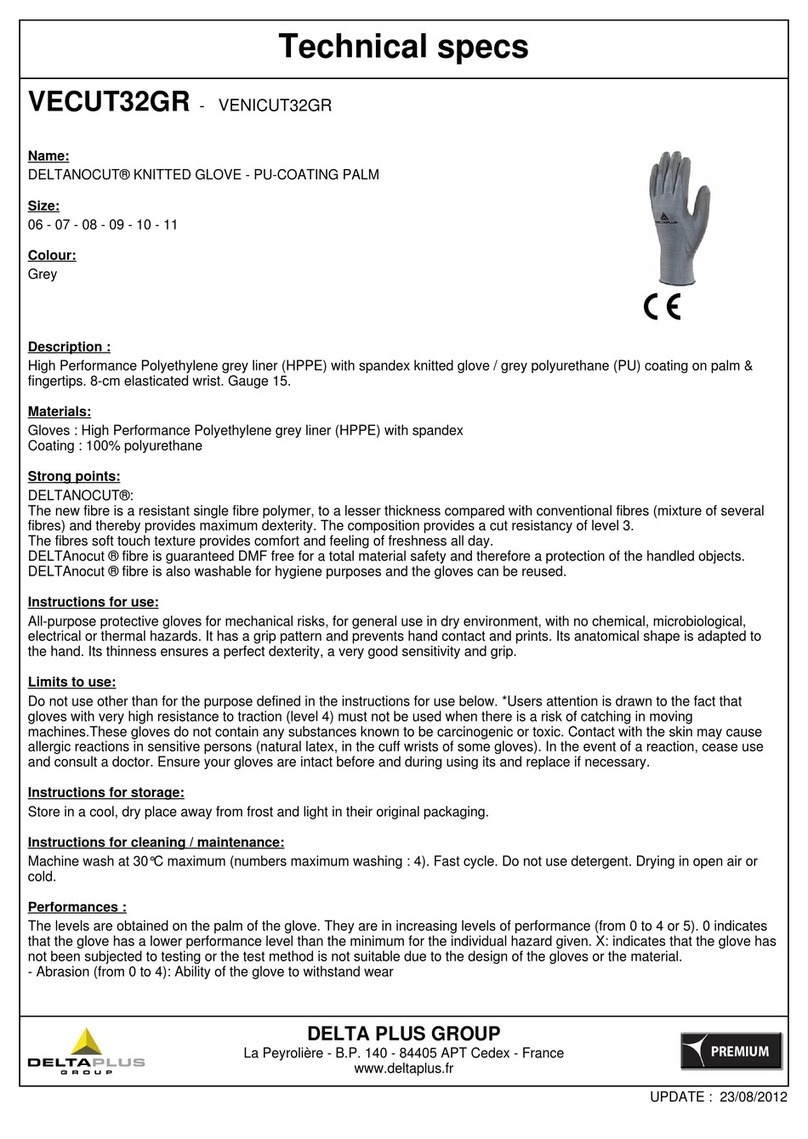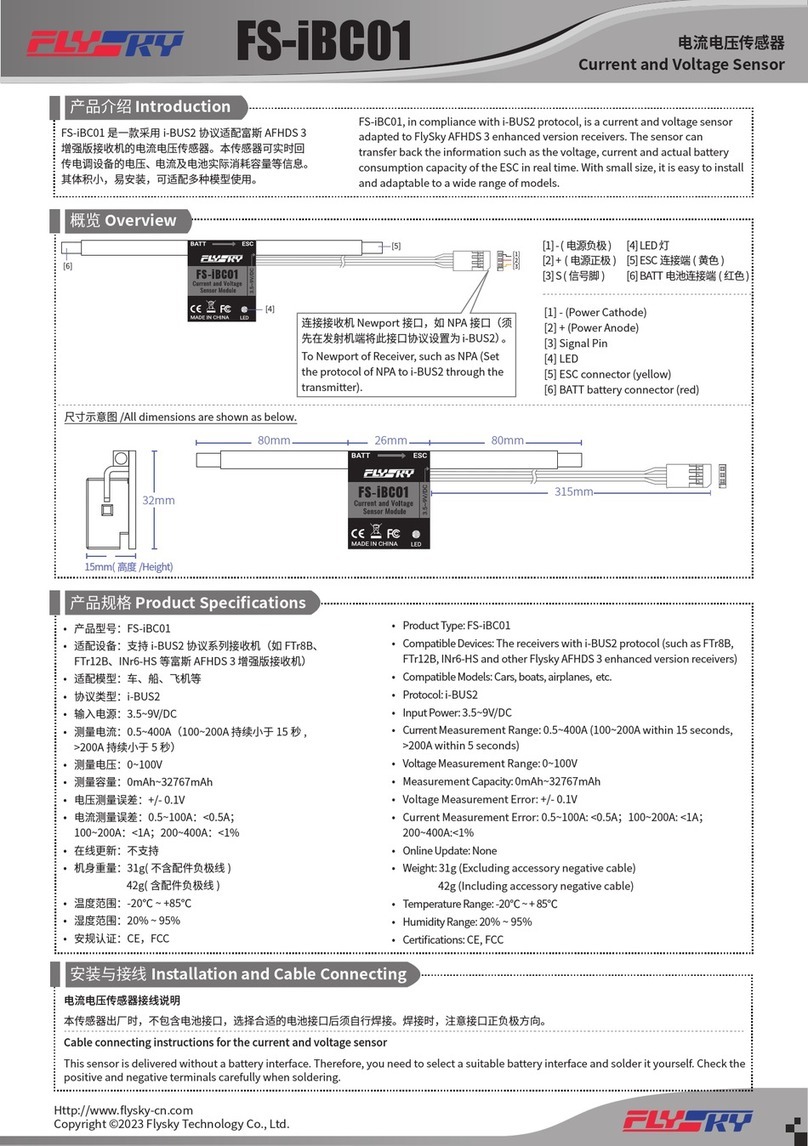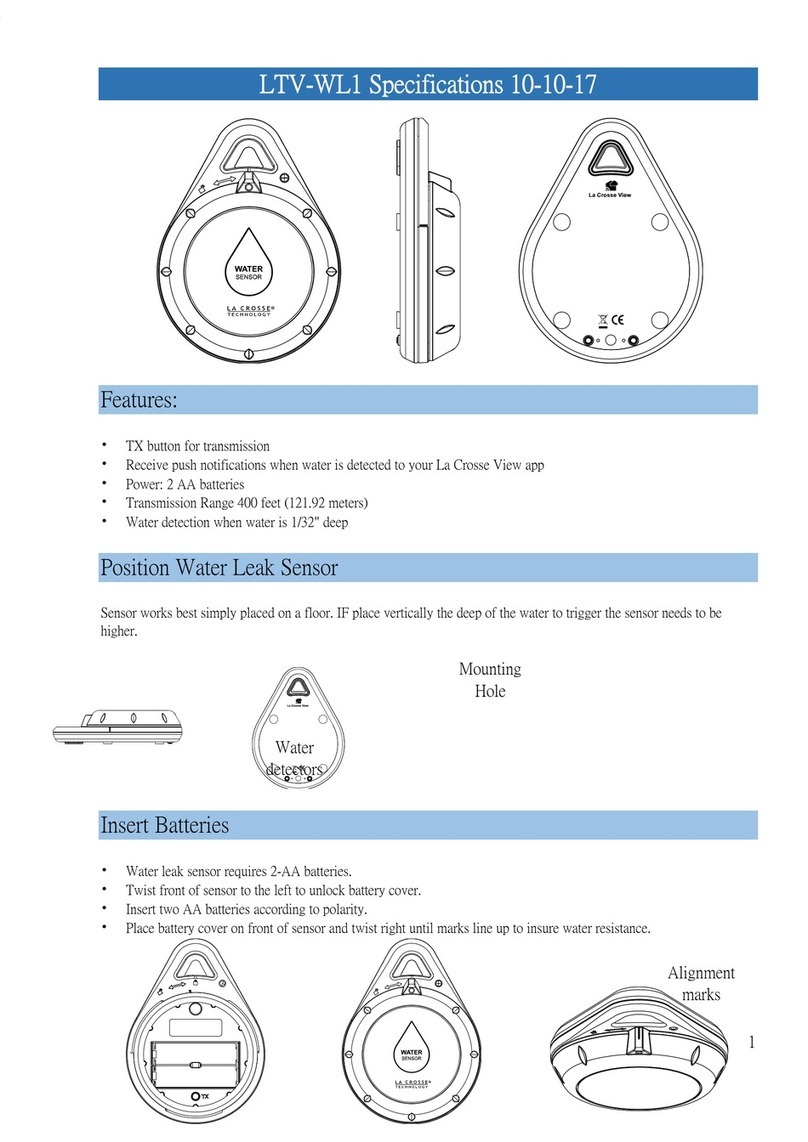STT Group NR-2000 User manual

Non-linear Junction Detector
USER MANUAL
20 19

NR-2000 User Manual
1
CONTENTS
Application
2
Description
4
Technical data
6
Principle of operation
7
Design
8
Accessories
12
Packing
16
NR-2000 application condition
17
NR-2000 safety precaution
17
NR-2000 operation
18
Getting started
18
NR-2000 workability test
19
NR-2000 searching technique
20
Operation termination and packing
22
Battery charging
22
Maintenance
25
Shipping and storage
27
Certificate of acceptance
27
Warranty
28
This Manual is intended
for explanation
“NR-2000” Non-linear Junction Detector
design & principle of operation
as well as directions for its use.
For proper equipment use
study this Manual in depth.

NR-2000 User Manual
2
APPLICATION
NR-2000 Non-linear Junction Detector is intended for searching
concealed electronics like eavesdropping installations, Remote
Controlled Improvised Explosive Devices (RC IED) and etc. as well
as other items that contain semi-conductor elements.
NOTE: NR-2000 can detect typical targets in every
operational mode: active, stand-by or even switched-off.
NR-2000 typical targets:
-Radio-mikes
-Microphone amplifiers
-Wired mikes
-Video & audio recorders
-SIM cards
-Electronic timing devices
-Devices with infrared (IR) or ultrasonic data & control channel
-Remote Controlled Improvised Explosive Devices (RC IED)
Fig.1 NR-2000 Non-linear
Junction Detector

NR-2000 User Manual
3
NR-2000 possible application fields
-Crime scene investigation for hard evidence of explosive
terrorism that contains any electronic components and its remains:
triggers, communication facilities and etc.).
-Searching for Improvised Explosive Device (IED) that contains
electronic components in typical urban environment.
NOTE 1: In practice NR-2000 is immune to interfering signals typical
to urban conditions.
NOTE 2: The IED detection range is comparable with that of an ‘Eagle’
NLJD –Russian standard tool for field operations: 7-10 meters.
NOTE 3: Fortunate combination of significant detection range with low
radiation level and practical immunity to unban interference
guarantees NR-2000 operator from spontaneous IED triggering.
-Various premises investigation for mobile phones and SIM-cards
hidden in domestic articles.
NOTE: NR-2000 ensures mobile phones and SIM-cards detection in
moist environment and light construction materials up to the distance
of 1m and 0.5m respectively.
-Searching for eavesdropping devices concealed in light building
structures, furniture and various home appliances as well as their
reliable localization.
NOTE 1: NR-2000 can easily detect targets in building structures
behind their reinforcement elements (steel grid and etc.)
NOTE2: NR-2000 provides its operator with an opportunity to
discriminate between industrial electronic elements and metal-to-metal
contacts, so called ‘corrosion diodes’.
NR-2000 NLJD represents a
comprehensive multi-purpose tool
with mid-power output and an outstanding
searching ability and rate.

NR-2000 User Manual
4
DESCRIPTION Complete set
NR-2000 is supplied as a complete set (see fig. 2 and Table 1).
Fig. 2 NR-2000 complete set
1
2
3
4
5
6
7
8
9
10
11
13
14
12

NR-2000 User Manual
5
Table 1
1
Main Unit (transceiver)
with Antenna module and Control unit
1
2
Headphones receiver
1
3
AAA cells
3
4
Standard packing
1
5
Soshine 18650 rechargeable cells
5*
6
Soshine SC-S1 max charger
1
7
Headphones
1
8
AC power adapter
1
9
Car power adapter
1
10
Imitator (test unit)
1
11
Electric torch
1
12
Electric torch sheath
1
13
Forearm support
1
14
Shoulder belt
1
15
User Manual (not shown)
1
*- 2 x 2 cells set for NLJD + 1 for an electric torch.

NR-2000 User Manual
6
TECHNICAL DATA Table 2
Scale ‘2’ readings under following
conditions:
-standard test unit detection range -
1±0.05m
-probing signal min output &
minus 20dB received signal attenuation
4 LEDs are
glowing
(at least 10dB)
Probing signal output attenuation
2 steps 0 dB & -
6dB
Receiver input signal attenuation
5 steps:
0dB, -10dB,
-20dB, -30dB,
and -40dB
Indication
Audio &
LED display
Operational condition:
-operational temperature range
-relative humidity (under +25°C)
-20°C…+40°C
Not more 80%
Power supply
2x18650 Li-ion
rechargeable cells
Continuous operation time
-searching mode
-20K
Not less 4h*
Not less 1.5h*
Weight:
-Main unit (transceiver) with battery
-Complete set in carry bag
3.0 kg
10.0 kg
*- with 2800mAh cells

NR-2000 User Manual
7
PRINCIPLE OF OPERATION
NR-2000 detector represents a portable device that consists of antenna
system, probing signal transmitter and 2 receivers tuned to the double
& triple frequencies of the emitted signal.
Mono-harmonic probing signal emitted by transmitter is converted by
non-linear elements (industrial semi-conductor or corrosion
metaloxide-metal structure) to poly-harmonic one and re-radiated into
an ambient space.
The re-radiated 2-nd & 3-rd harmonic of the probing signal are received
and processed by above-mentioned receivers (see fig. 3).
The received signals levels are displayed by two bar-graph scales: ‘2’
(red) & ‘3’ (green) respectively.
Furthermore, at the same time tonal acoustic signal is reproduced bythe
headphones. The tonal signal level corresponds to that of the received
electric signals.
Volume control is adjusted by (+ VOL -) buttons of the Control unit.
At that a corresponding bar-graph scale is switched over for sound level
indication for one sec.

NR-2000 User Manual
8
The received signal level can be adjusted by Control unit with
appropriate LED confirmation.
20K-mode activated by Control unit is used for revealed target
identification. This auxiliary mode allows operator to evaluate probable
probing signal amplitude modulation.
DESIGN
NR-2000 Main unit consist of antenna module, probing signal
transmitter unit, two receivers, telescopic bar and control unit with LED
display (fig. 4). The unique ‘Bullpup’ design provides NR-2000
ergonomic advantages in any possible application.
1
2
3
4
5
6
7
8
9
Fig.4 NR-2000 Main unit design
1-
Antenna module
2-
Antenna module joint
3- Telescopic bar with level-locks
4-
Control unit with display
5-
Handle
6-
Headphone jack
7-
Forearm support mount
8-
Transceiver
9- Battery compartment

NR-2000 User Manual
9
UHF cables pass through the telescopic bar.They are permanently fixed
to the antenna module and transceiver unit.
NR-2000 Antenna module is fasten to the tip of 3-elbou telescopic bar
(fig. 5). Telescopicbarlength can be adjusted by means of 2 levellocks.
Telescopic bar
axis
Telescopic bar
axis
Antenna module
axis
Telescopic bar
level-lock
Telescopic bar
level-lock
Antenna
rotation
level-lock
Antenna elevation
holder screw
Fig.5 Antenna system adjustment
Fig.5a Antenna system adjustment

NR-2000 User Manual
10
Moreover, antenna system position can be adjusted in two planes i.e. -
two-dimensional motion is available (see fig. 5 & 5a).
Step 1
-Loosen antenna elevation holder screw.
-Adjust antenna elevation rotating it relative to antenna module axis.
-Tighten the antenna elevation holder screw.
Step 2
-Unfasten level-lock responsible for antenna rotation.
-Adjust antenna position rotating it relative to the telescopic bar axis.
-Fasten antenna rotation level-lock.
Forearm support is attached to the Main unit body with a latch.
(fig. 6).
Fig.6 Forearm support
USEFUL HINT:
NR-2000 Main unit
in operating position
is supported by the grip in a manner
similar to ‘bull-pup’ design rifle
handling

NR-2000 User Manual
11
NR-2000 control unit (fig. 7) is placed on top of the telescopic bar
(see also fig. 4) and in essence consists of LED display for
representing an acting operational mode and received signals level as
well as control board with 10 non-fastening buttons that are used for
adjusting and altering operational mode.
Control unit are permanently coupled to the Main unit
7
6
5
4
3
2
1
8
9
10
Fig. 7 NR-2000 Control unit
1. Power ON/OFF
button
2.
20K mode activation
button with LED
confirmation
3.
CH button for radio-
channel activation
with blue LED
confirmation
4.
2-nd & 3-rd harmonic
switch-over button with
LED confirmation
5.
Headphone volume
control
6.
Probing signal output
indication (min –
max)
7.
Output level
adjustment button
8.
Received signal
attenuation
9.
Attenuator scale with
10dB step
10.
Received signal 2-nd
(red) & 3-rd (green)
harmonics LED bar-
graph indicator (each
step - 2.5dB)

NR-2000 User Manual
12
NR-2000 power supply
is provided by the battery of two
Li-Ion rechargeable cells.
Battery compartment is located
under Control unit module in
Detector handgrip (fig. 8).
NOTE: For better operator
convenient NR-2000 main unit is
supplied with a shoulder belt
ACCESSORIES
Headphones (fig. 9) can be
connected directly to the Main unit
via corresponding jack at a back
side of the housing.
Fig.8 NR-2000 power supply
installation
Fig. 9 Headphones connection
Main unit
Headphone jack

NR-2000 User Manual
13
Otherwise they can be coupled by means of a dedicated receiver (see
fig.2, item 2 & fig. 10). An audio-signal transmitter is incorporated into
the main unit.
At the Operator's option headphone receiver can be placed in his pocket
The receiver power supply is obtained by two AAA cells (supplied).
Use the ON/OFF button on the receiver front panel for its activation.
Press CH button to activate built-in audio signal transmitter that is
confirmed by corresponding blue LED.
The headphones volume control is available from Control unit
NOTE 1: For correct operation switch-on the receiver after the Main
unit activation.
Power supply cells installation
Jack for headphones connection
Indicator
Fig.10 Radio-channel receiver connection

NR-2000 User Manual
14
For battery charging Soshine SC-S1 max charger (supplied) is used
(see fig.11).
NR-2000 power supply
is provided by the battery of two
Li-Ion Soshine 18650
rechargeable cells
(fig. 10).
Cell rated voltage is 3.7V
with 2800mAh
element capacity.
Two sets of cells
are provided.
Fig. 10 Soshine 18650 cell set of two
1
2
3
1–Soshine charger
2–
Soshine
AC adapter allows to
charge the battery from the mains
100 –240 V, 50/60 Hz.
3 –
Soshine
DС12V car adapter
is intended for battery charging
from the motocar 12V DC net.
Fig. 11 Soshine SC-S1
charger package

NR-2000 User Manual
15
Imitator (test unit) is intended for NR-
2000 workability control (fig.12).
It represents HF semi-conductor diode
(2D521A - in accordance with Russian classification) in
a solid plastic body Æ14 x 165 mm.
Electric torch (fig. 13) is intended for illuminating dark places under
control. The torch is powered by one Li-Ion Soshine 18650
rechargeable cell and (for operator convenience) supplied by a sheath
and a belt
Fig. 12 NR-2000 Imitator (test unit)
Fig. 13 Electric torch set

NR-2000 User Manual
16
PACKING
Complete set of NR-2000 NLJD is packed into a dedicated shockproof
metallic case (fig.13). The case is equipped with soft inserts.
Fig. 13 NR-2000 Detector packing chart Table 3
1
Main Unit
8
Soshine 18650
rechargeable cells (4 pcs)
2
Imitator (test unit)
9
AAA cells (3 pcs)
3
Headphones
10
Headphones receiver
4
Shoulder belt &
electric torch sheath
11
Soshine SC-S1 max charger
5
Electric torch
12
Car power adapter
6
Soshine 18650
rechargeable cell (1 pc)
13
User Manual (under cover)
7
AC power adapter
14
Forearm support
1
2
3
4
5
6
7
8
9
10
11
1
2
1
3
1
4

NR-2000 User Manual
17
NR-2000 APPLICATION CONDITION
After long-term exposure to a low temperature keep Detector
packed in a standard packing at least 2 hours for evening up its
temperature with the environment.
NR-2000 SAFETY PRECAUTIONS
-Operating NR-2000 keeps corresponding safety measures.
-Do not direct NR-2000 antenna to the human from a distance
less than one meter.
-Avoid prolonged presence of personnel in a main lobe of
NR2000 antenna diagram.
NOTE: Probing signal power density at the distance
of 1 meter along the maximum of NR-2000 antenna
directional radiation pattern does not exceed Russian
State Standard 12.1.006-84 (Russian State Sanitary
Norm) for UHF-equipment serviceman under
continuous 8-hours operation.

NR-2000 User Manual
18
NR-2000 OPERATION
WARNING: NR-2000 detector is a high-sensitive radio-electronic
device. Before operation, please, make sure to remove any
semiconductor-containing items from your clothing and munitions.
GETTING STARTED
Unpack NR-2000 detecting set.
Connect Headphones to a corresponding jack on the Main unit body or
use wireless headphones facilities (see pp. 12-13 for reference).
Install two fully charged Li-Ion Soshine 18650 cells into Detector’s
battery compartment (see fig. 8). Pay attention to their polarity
referring the label on the battery holder sidewall.
Close the battery compartment hatch.
Press button to switch on NR-2000 Detector.
At that the following mode is activated:
-Transmitter is OFF: probing signal output LED indication (min –
max) is dead.
-Receivers are ON to control noise environment.
-Headphones are coupled to the 2-nd harmonic receiver output. -
Input signals attenuation is in 0 dB state;
-Volume control is in the Mid-position.
Use ATT button to adjust maximum receiver sensitivity.
Point Antenna module to various directions switching over 2-nd & 3-rd
harmonic receivers outputs to evaluate the interference environments.
In case of a certain noise chose the antenna direction with no noise in
the headphones.

NR-2000 User Manual
19
NR-2000 WORKABILITY TEST
Press PWR button to activate probing signal transmitter - LED min
will confirm the minimum probing signal output power.
Point out NR-2000 antenna module to standard imitator (test unit) from
0.3…0.5m distance (fig. 14) - a tonal audio signal will be head in the
headphones confirmed by 2-nd harmonic bar-graph LED indication.
Move imitator in various directions noting LED bar-graph indication
obtaining a full scale indication for the 2-nd harmonic.
Then use ATT+button to engage successive step of input attenuator.
Make sure that every stroke corresponds to an adequate attenuator
activation and 2-nd harmonic indication declination.
Press PWR+ button to boost probing signal output level.
Make sure that every stroke corresponds to an adequate PWR scale
increment and 2-nd harmonic indication gain.
Switch off the Detector
NR-2000 detector is ready for operation
USERFUL HINT: In case of battery discharge
2-nd & 3-rd LED bar-graph scales are lit by turns
Fig.14 NR-2000 workability test
Table of contents
Popular Security Sensor manuals by other brands
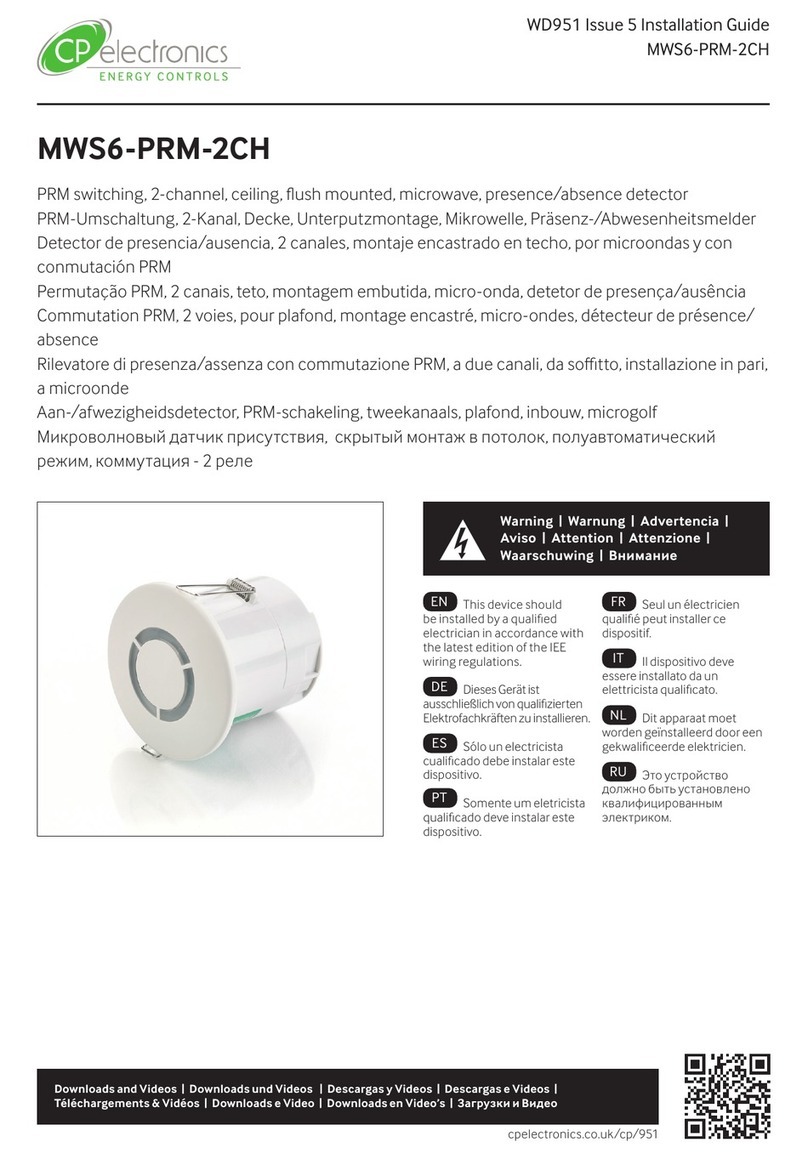
C.P. Electronics
C.P. Electronics MWS6-PRM-2CH installation guide
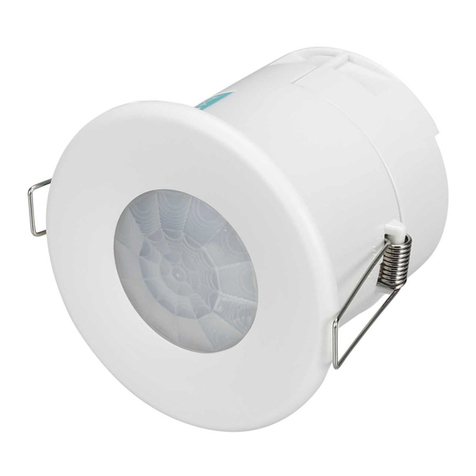
C.P. Electronics
C.P. Electronics EBDSPIR-DD installation guide
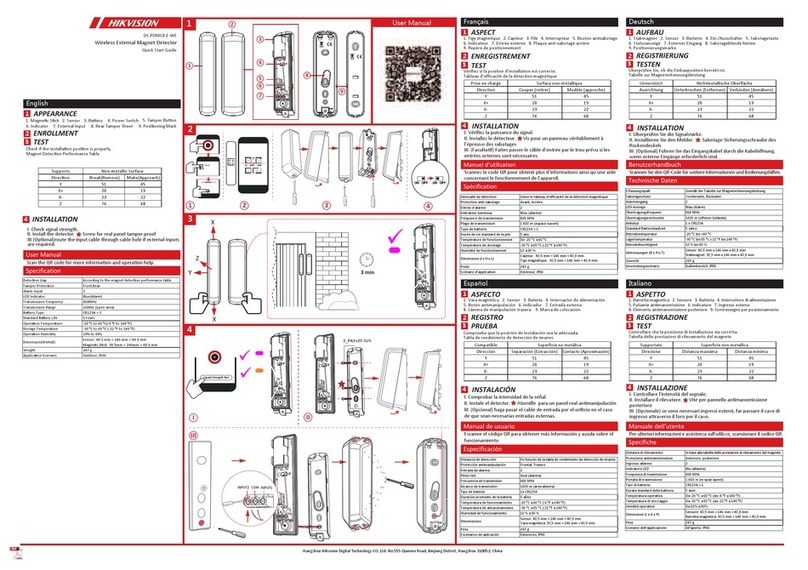
HIK VISION
HIK VISION DS-PDMCX-E-WE quick start guide

In-situ
In-situ SludgeWatch 715 Operator's manual
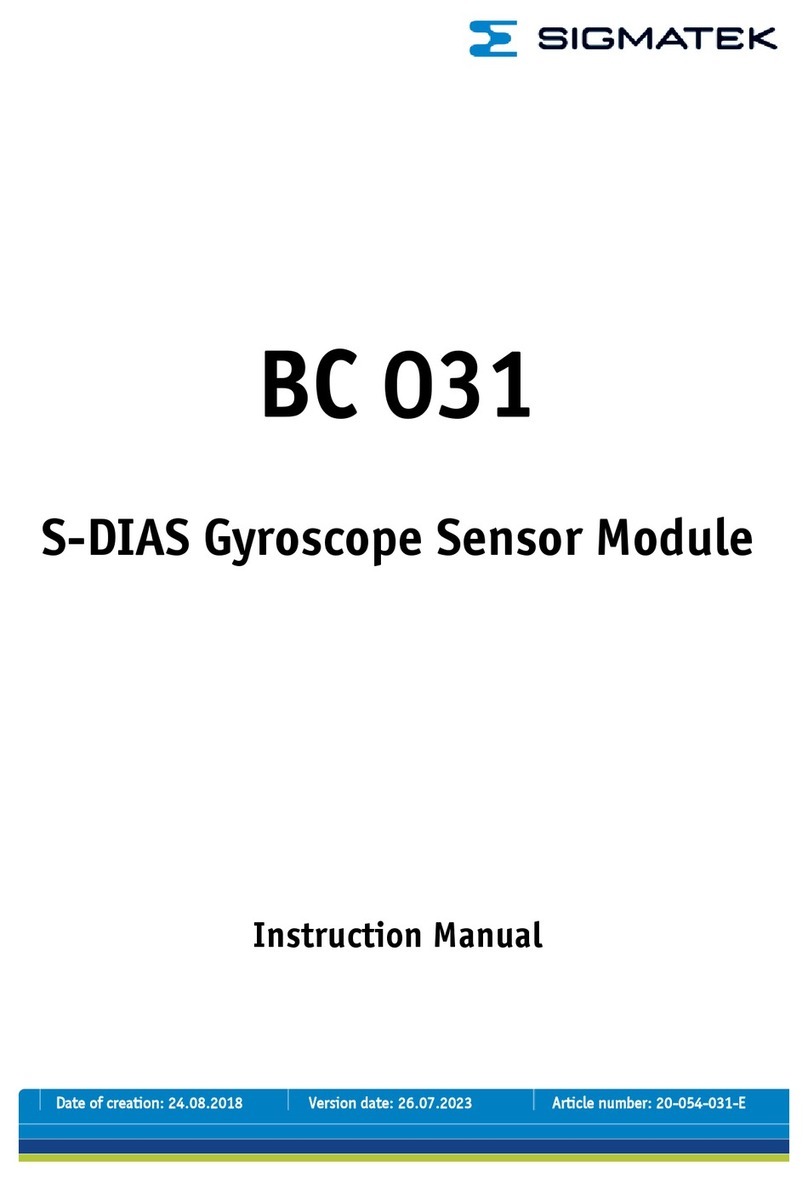
SIGMA TEK
SIGMA TEK BC 031 instruction manual
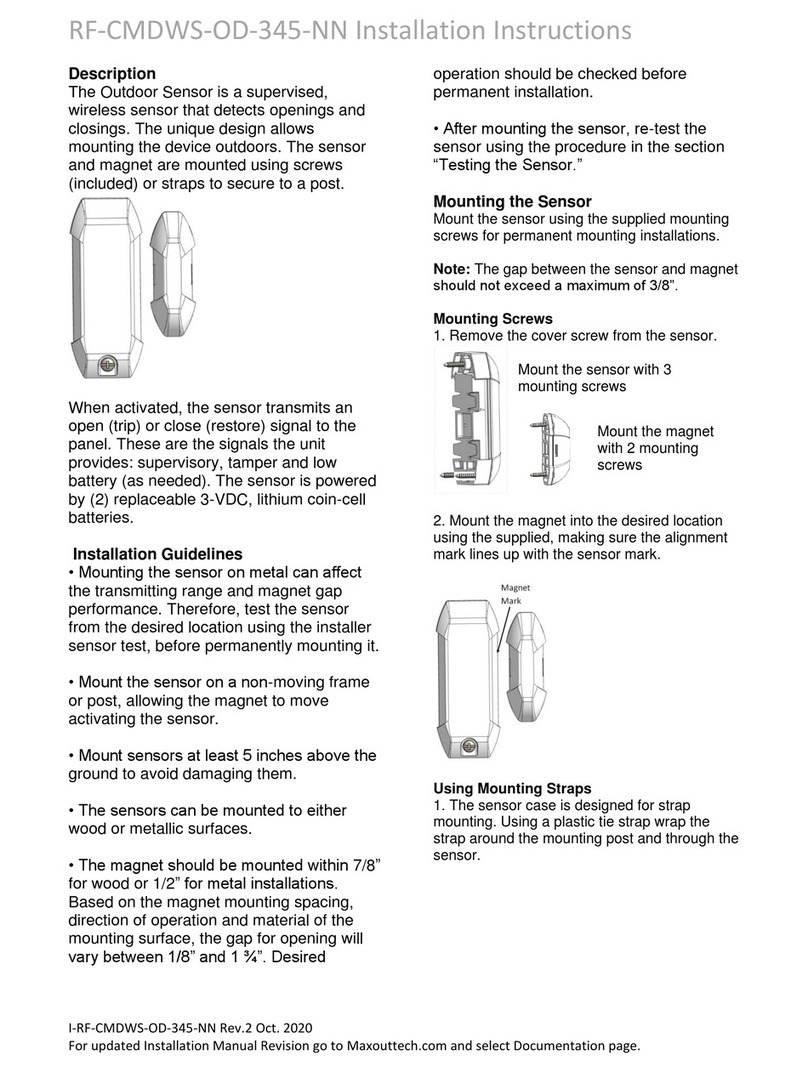
Maxouttech
Maxouttech RF-CMDWS-OD-345-NN installation instructions

